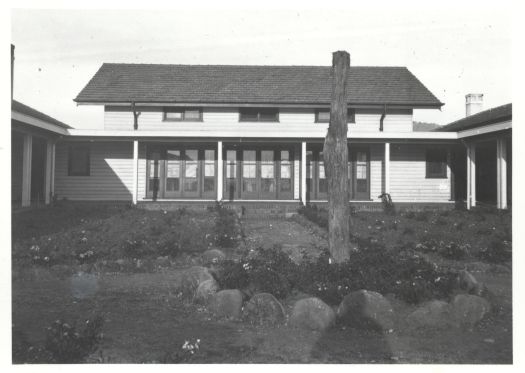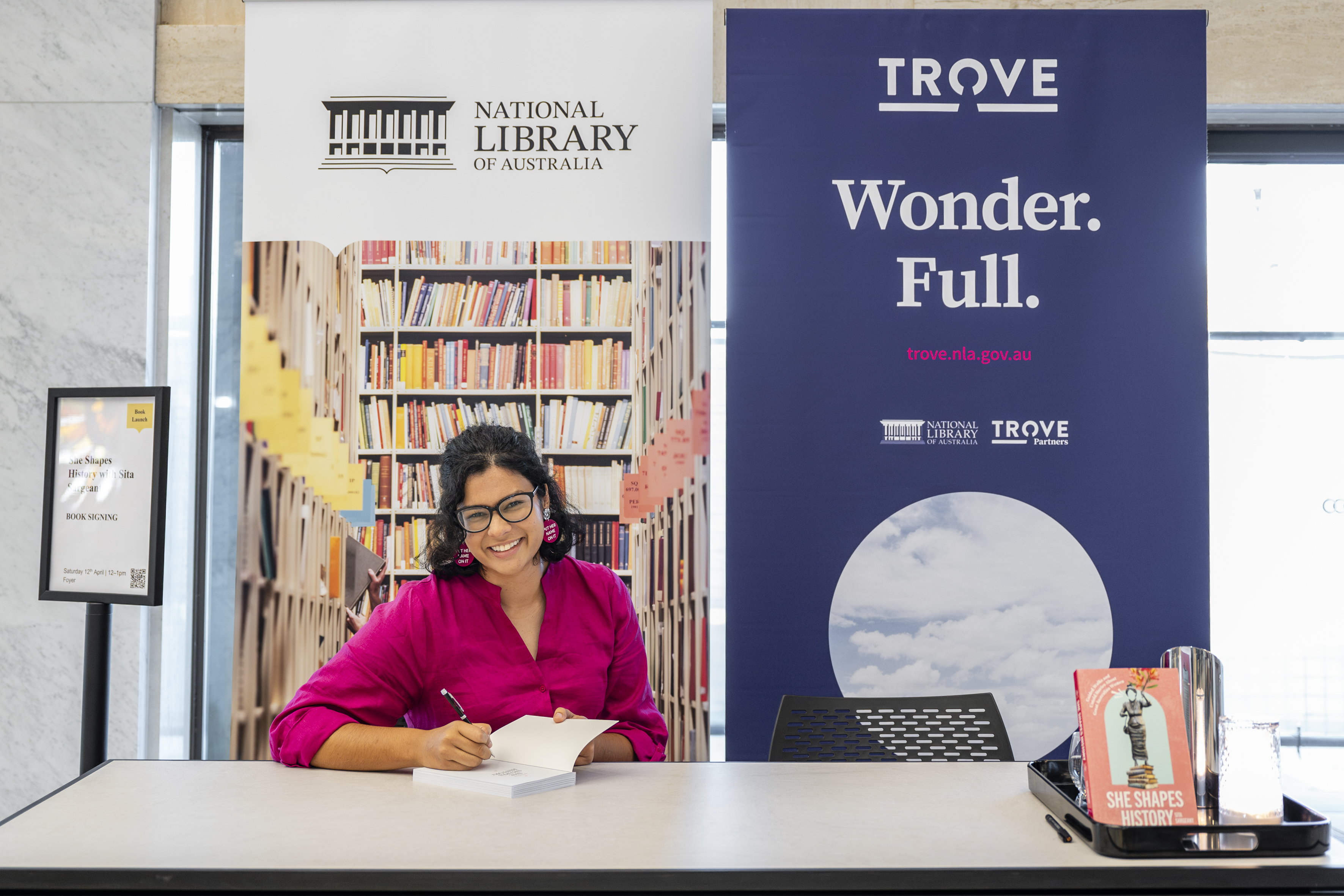
She Shapes History with Trove
Founded in 2021 by Sita Sargeant, She Shapes History celebrates the contributions of women in the past to create more respect for women today. As Zev Aviv, Operations Manager at She Shapes History, puts it:
‘If we cannot see ourselves reflected in the past, how do we imagine a future?’
Using Trove, the She Shapes History team have researched and fact-checked Australian women’s history to highlight stories that have previously been hidden. Sita and her team share these stories through a series of walking tours, a podcast and now a new book, She Shapes History: Guided Walks and Stories About Great Australian Women, which was recently launched at the National Library of Australia.
Learn more about this National Library of Australia event and access the video transcript.
Researching Queers Past
Zev runs She Shapes History’s Canberra-based Pride in the Capital walking tour. They have used Trove to research this fascinating history, which has also now been turned into a podcast, Queers Past.
‘I both discovered and confirmed stories using Trove, some of the most important things I found are not stories themselves but examples of the texture and character of the time,’ they say.
One of the sources Zev found most useful in Trove was past issues of The Canberra Times. By reviewing articles from the 1950s through to the 1980s, they were able to see the shift in tone as society’s view changed over the decades.
While researching the 1950s and 1960s, Zev was able to find newspaper reports that included the names and addresses of gay men who were arrested at beats. ‘Newspapers would publish these as public acts of shaming,’ they say.
Jumping forward to the 1980s, Zev used Trove to access articles about the HIV/AIDS crisis and was able to narrow down their focus to the stories communicated to Canberrans at the time. Articles published in The Canberra Times included a report on the first Australian AIDs death in June 1983. Three months later the paper was reporting that 50 cases were being investigated by the NSW Department of Health.
By the late 1980s and early 1990s, social attitudes towards the LGBTQIA+ community in Canberra were beginning to shift. Articles like this one from 1989 about The Meridian Club show a growing acceptance within the community. The article also reveals valuable information about Canberra’s queer history. We learn that the club had 200-300 members and that only 10-20% were women. We also learn that there was a desire within the community to have a space for quiet conversation with friends and other members, in addition to the disco the club offered.
A 1993 article published in Woroni, the Australian National University’s student newspaper reveals that in just 4 years the club grew to 500 members. By this stage, the club had also moved from its temporary location at Gorman House, to a licensed venue on Mort Street in the Canberra suburb of Braddon. Episode 3 of Queers Past shares more stories about The Meridian Club and the impact of the AIDS crisis on Canberra’s queer community.

Zev uses images from Trove, like this one of Gorman House, to give audiences a visual representation of the stories they are sharing.
Using Trove
Trove has become an essential tool for the She Shapes History team, who report to now using and sharing stories from Trove weekly. As Zev says:
‘Once I started researching and writing the podcast I happily fell or perhaps leapt headfirst into many Trove rabbit holes... I cannot overstate how integral Trove has been to the creation of Queers Past, especially for someone like me who has a few chronic conditions which makes in person research at times hard to do!’

Zev says they have also used Trove as a secondary source to confirm information found when researching in-person at the National Library of Australia.
‘Having such a wide and deep archive of deeply human history, from publications, images, documents and so much more when writing a history podcast has been more valuable than I could possibly describe.’